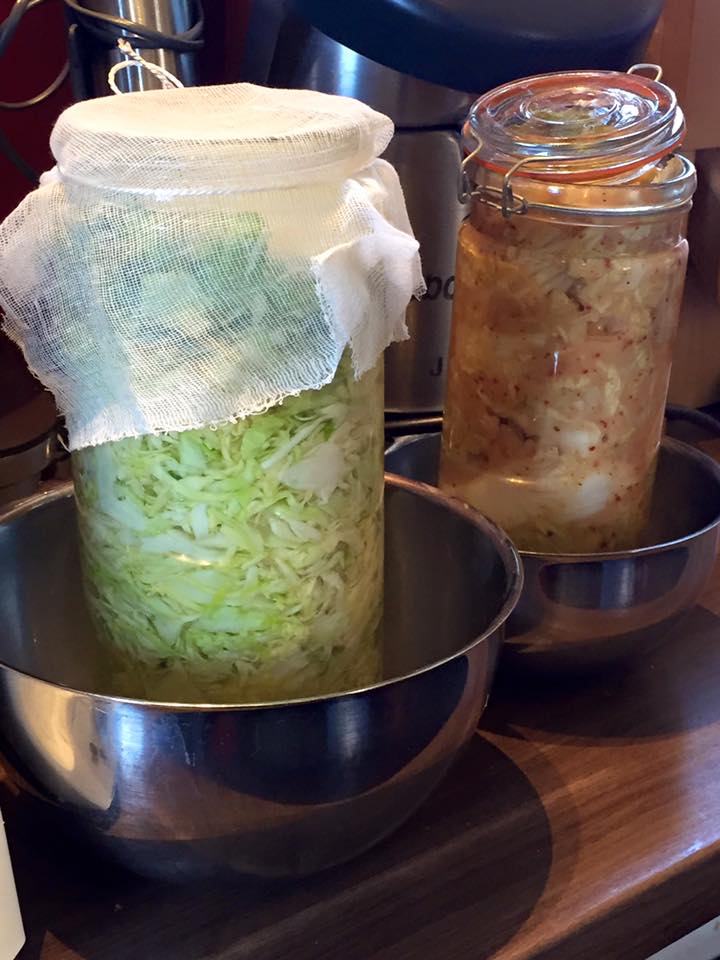Sauerkraut Recipe
Take care of your gut health – make your own probiotic foods at home!
Sauerkraut is a tasty and versatile fermented condiment that can be added to salads, eaten by the spoonful or mixed in with any meal to add amazing health benefits to your daily diet.
For more information on the role of good bacteria (microbiota) in human health click here.
For a comprehensive lesson on how o make Sauerkraut and all the other fermented foods and drinks, check out our fermentation class @ Trupp Cooking School = Heal your gut with the lost art of fermentation.
Below is a recipe for Sauerkraut that you can make at home.
[youtube https://www.youtube.com/watch?v=VCQX05h-1Gk]
You will need a large glass jar to store your Sauerkraut.
Ingredients
- Cabbage (red and/or green)
- You can also add carrot, fennel, dill or garlic if you wish to be creative with flavour.
- Sea salt, fine (about 2.5 tablespoons is good for just over 2 kilograms of vegetables, or 2.5% of its weight)
Method
- Slice the cabbage finely and weigh it, measuring out 2.5% of the salt in comparison to the cabbage (1 kilogram of cabbage takes 1 table spoon of salt).
- Get in there with your hands and squeeze the ingredients together. Squeeze hard – you want to stimulate the natural juices of the vegetables because they’re going to be your brine. The salt will already start pulling the moisture out, but you can certainly help the process.
- Start packing your mix into your vessel. Pack it down good and hard, going slowly to make sure each addition is completely compressed in the jar. This will extract water and ensure the fermentation process goes smoothly.
- Cover the jar with a snug-fitting cap, or if you’re using a larger crock, try a plate. Top that with something heavy to weigh it down, like a bottle of water or a rock. You want to make sure the weight is enough to keep the mix packed tight and submerged in the brine. Cover the whole thing loosely with a cloth or towel to keep bugs out.
- Every few hours for the next day or so, press down on the top and make sure the mix is submerged in brine. If it isn’t by the next day, you might have old cabbage. That’s fine. Just add a bit of water to cover everything, along with a teaspoon of salt.
- Check your sauerkraut every day or so. The volume will reduce as fermentation begins, and that’s exactly what you want. Mould or scum might appear on the surface every day too; just skim that stuff off. As long as you stay on top of it, your sauerkraut will be totally protected by the brine.
- Start tasting your sauerkraut after a few days. It should be tangy by now and you can begin to gauge just how pungent you want it. The taste will get stronger as time goes on. Every time you eat some, make sure you pack the rest of it in just like before: tightly packed, submerged, and with a weight pressing it down. Though sauerkraut is usually ready to eat in 3–7 weeks, if the storage place is cool enough, like a cold cellar, the food can improve for months. If you live in warmer climates, you might want to move your sauerkraut into the fridge after a few weeks. Just stay on top of it, keep tasting it, and you’ll be able to decide what to do with it.


